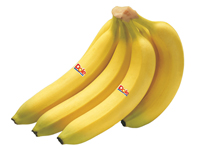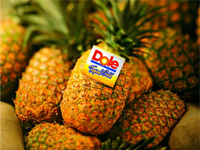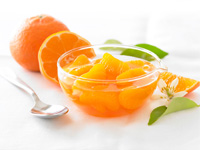Gourmet rock or sea salts, sometimes with exotic sourcing (e.g., Himalayas, Cayman Islands) and attractive pastel colors have become the new “it” ingredient.While chefs may emphasize flavor enhancements, some sea salt purveyors are making ambitious health claims, promising their product will reduce signs of aging, support your libido, and promote the proper pH balance in your brain cells.Consumers are responding: The sea salt market grew 67% per year over 2007-2010.Indeed, one British study found that a quarter of consumers believe that sea salt was healthier than table salt—and almost half thought it was worth the higher price tag.But since that price tag can ring up 22 times higher than table salt (for example, one of the more expensive brands costs $125 per lb.), we asked ourselves: While you’re shaking out, are marketers shaking you down?
The belief in sea salt salubriousness hinges on the premise that it contains “natural” nutrients and more minerals than table salt.While this may be technically true, the amounts are so minuscule as to be meaningless in the body—or the minerals are so arcane as to have no known health benefit.For example, one analysis of a popular sea salt found that a quarter teaspoon provided 0.128% of calcium, 0.012% of iron, and.0.227% potassium. It also supplies infinitesimal amounts of strontium, rubidium and erbium—for whatever that’s worth.Far more relevant is the fact that unlike table salt, sea salt is not fortified with iodine which supports thyroid health.Iodine deficiency during pregnancy is the most common cause of retardation globally.
Any health advantages to sea salt are fantasy—but the health risks of too much sodium are all too real.Both gourmet and table salts contain the same amount of sodium—the danger is that imagined health benefits of sea salt would encourage people to use the stuff even more liberally.Most people already consume well in excess of up to 3 times the amount of the 1,500 milligrams of sodium the body needs on a daily basis, so upping that intake amounts to an expensive way to increase your risk of hypertension, stroke and heart disease.Indeed, the Academy of Nutrition and Dietetics (formerly American Dietetic Association) states that reducing salt intake by a mere 15% could translate into 9 million fewer deaths caused by the complications brought on by high blood pressure.So save your money—and your health—by forgoing fancy gourmet salts in favor of herbs, spices and other low-sodium flavorings.
The belief in sea salt salubriousness hinges on the premise that it contains “natural” nutrients and more minerals than table salt.While this may be technically true, the amounts are so minuscule as to be meaningless in the body—or the minerals are so arcane as to have no known health benefit.For example, one analysis of a popular sea salt found that a quarter teaspoon provided 0.128% of calcium, 0.012% of iron, and.0.227% potassium. It also supplies infinitesimal amounts of strontium, rubidium and erbium—for whatever that’s worth.Far more relevant is the fact that unlike table salt, sea salt is not fortified with iodine which supports thyroid health.Iodine deficiency during pregnancy is the most common cause of retardation globally.
Any health advantages to sea salt are fantasy—but the health risks of too much sodium are all too real.Both gourmet and table salts contain the same amount of sodium—the danger is that imagined health benefits of sea salt would encourage people to use the stuff even more liberally.Most people already consume well in excess of up to 3 times the amount of the 1,500 milligrams of sodium the body needs on a daily basis, so upping that intake amounts to an expensive way to increase your risk of hypertension, stroke and heart disease.Indeed, the Academy of Nutrition and Dietetics (formerly American Dietetic Association) states that reducing salt intake by a mere 15% could translate into 9 million fewer deaths caused by the complications brought on by high blood pressure.So save your money—and your health—by forgoing fancy gourmet salts in favor of herbs, spices and other low-sodium flavorings.




